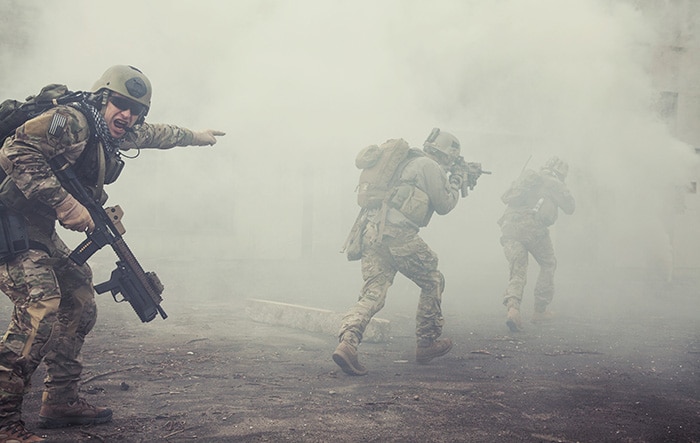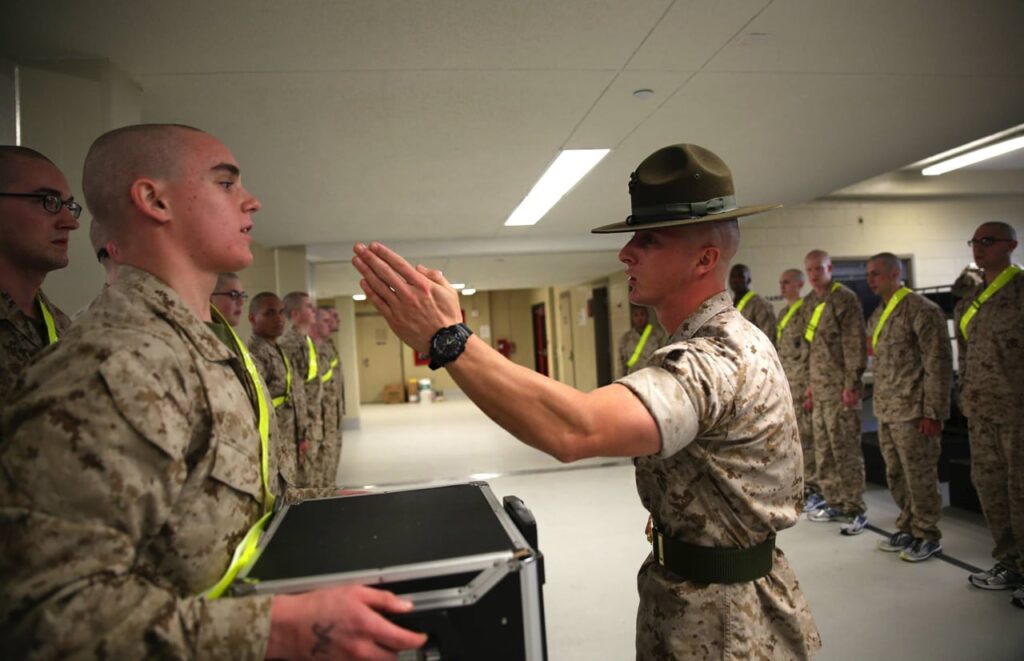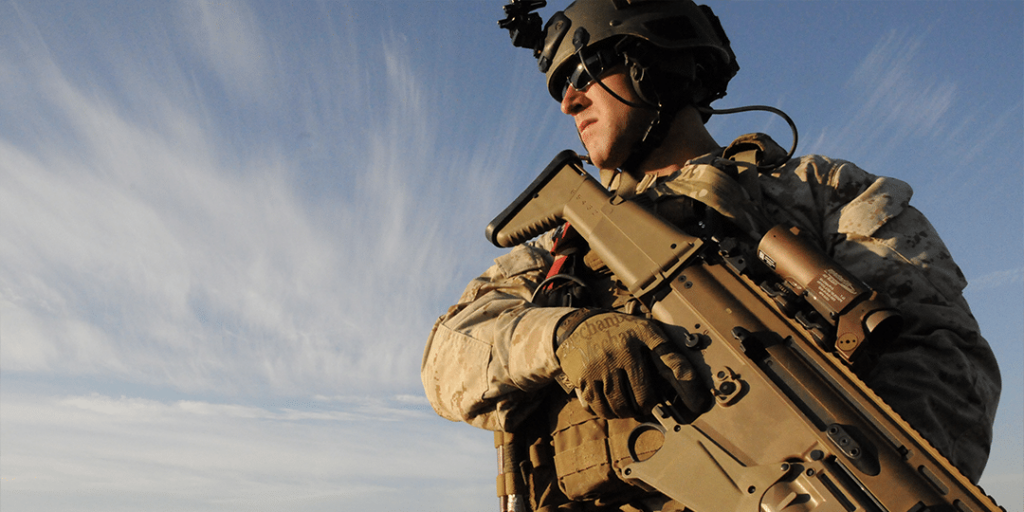
- The App
- Sandboxx News
- Resources
Learn
- Company
About
Become a Partner
Support
- The App
- Sandboxx News
- Resources
Learn
- Company
About
Become a Partner
Support
WASHINGTON — The U.S. Army has announced major revisions to Army Regulation 670-1, Wear and Appearance of Army Uniforms and Insignia, which will include guidance on...
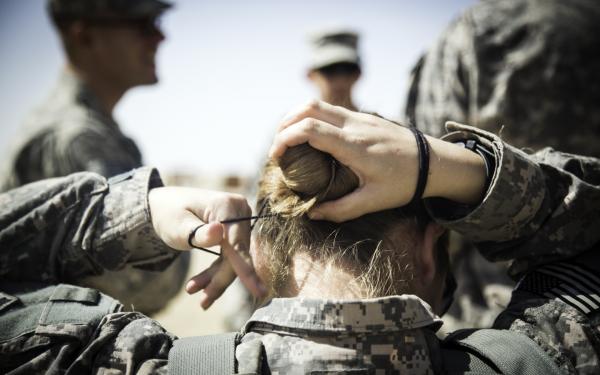
WASHINGTON — The U.S. Army has announced major revisions to Army Regulation 670-1, Wear and Appearance of Army Uniforms and Insignia, which will include guidance on wearing the new Army Green Service Uniform and several other key changes. In addition, the Army is also revising its grooming standards to support its People First priority and diversity and inclusion efforts.
“The Army must continue to put people first by fostering a culture of trust that accepts the experiences and backgrounds of every Soldier and civilian,” said Lt. Gen. Gary Brito, Deputy Chief of Staff for Personnel. “Our diverse workforce is a competitive advantage, and the Army must continue to offer fair treatment, access and opportunity across the force.”
The new version of AR 670-1 will go into effect Feb. 24. Major changes include implementation of the AGSU, clarified policy on breastfeeding or pumping in uniform, authorization for breastfeeding/pumping Soldiers to wear an optional undershirt, implementation of the Improved Hot Weather Combat Uniform, and full transition to the Operational Camouflage Pattern — removing references to the Universal Camouflage Pattern.
“The Army has maintained a longstanding tradition of Soldiers presenting a clean and professional appearance,” said Sgt. Maj. Mark Anthony Clark from the Army’s Office of the Deputy Chief of Staff for Personnel (G-1). “A professional appearance is an outward manifestation of the pride they have in themselves and in service to our country.”
New grooming standards, which will be reflected in a forthcoming memo (ALARACT), will also go into effect in February. Approved revisions include optional wear of earrings, lipstick and nail colors for women and clear nail polish for men. Earrings will remain unauthorized in field environments, combat-related deployments or locations where access to normal hygiene is not available.
Approved hairstyle changes include no minimum hair length for female Soldiers, allowing multiple hairstyles at once (i.e. braiding, twists or locs). Soldiers will be able to wear ponytails if unable to form a bun, and may wear long ponytails while conducting physical training, in the combat uniform or when female Soldiers wear equipment such as, but not limited to, combat helmets.
“In an effort to stop hair damage and loss stemming from hairstyles like the bun, the Army approved healthier hairstyle options that are more inclusive of various natural styles,” said Clark.
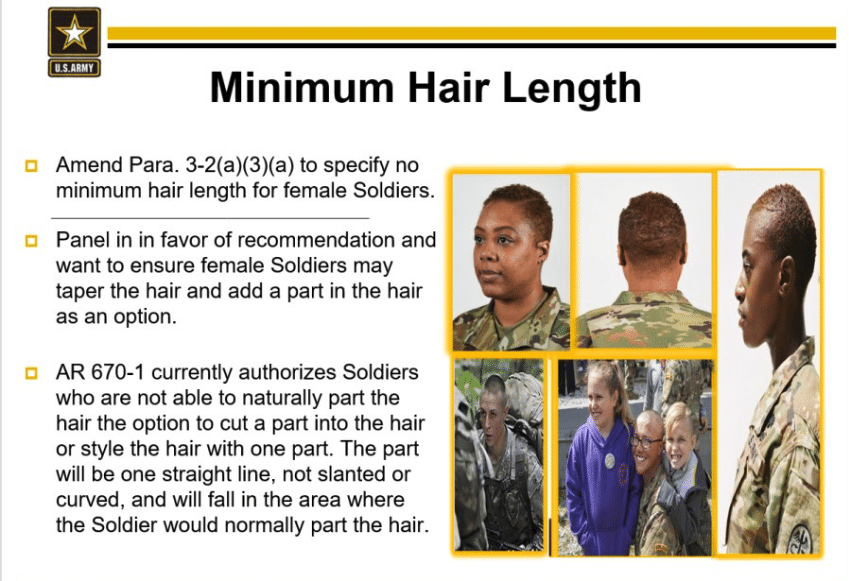
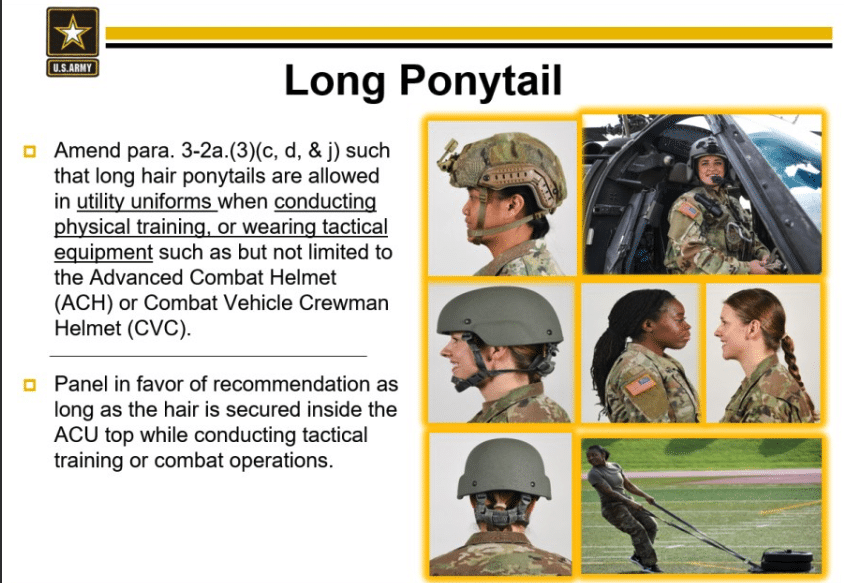
Soldiers will also be allowed to have a uniform hair color blend (also known as highlights) as long as it presents a natural appearance. However, purple, blue, pink, green, orange, bright red, fluorescent or neon colors, and some others will be prohibited.
In addition, the revised regulation will not contain potentially offensive language used to describe several hairstyles – for example, “Mohawk, eccentric, faddish, Fu Manchu, dreadlock” – which will be replaced with alternative verbiage.
“We are continuously assessing our policies to identify areas for improvement, then implementing policies that demonstrate our commitment to ensuring all Soldiers feel as though they are valued members of the Army team,” said Brito. “We know that actions speak louder than words when it comes to inclusivity and equity within our ranks, and we believe that the changes we announced today are one example of policies that put our people first.”


